Disentis: All destinations, advice & information for your holidays!
The winter sports resort Disentis is nestled in the charming landscape of the Surselva in the Swiss canton of Graubünden. The community is primarily known for its monastery built in the Baroque style. In the surroundings of Disentis, you will find a well-developed network of cross-country ski trails and hiking paths.

Table of contents
Disentis - Must-see attractions
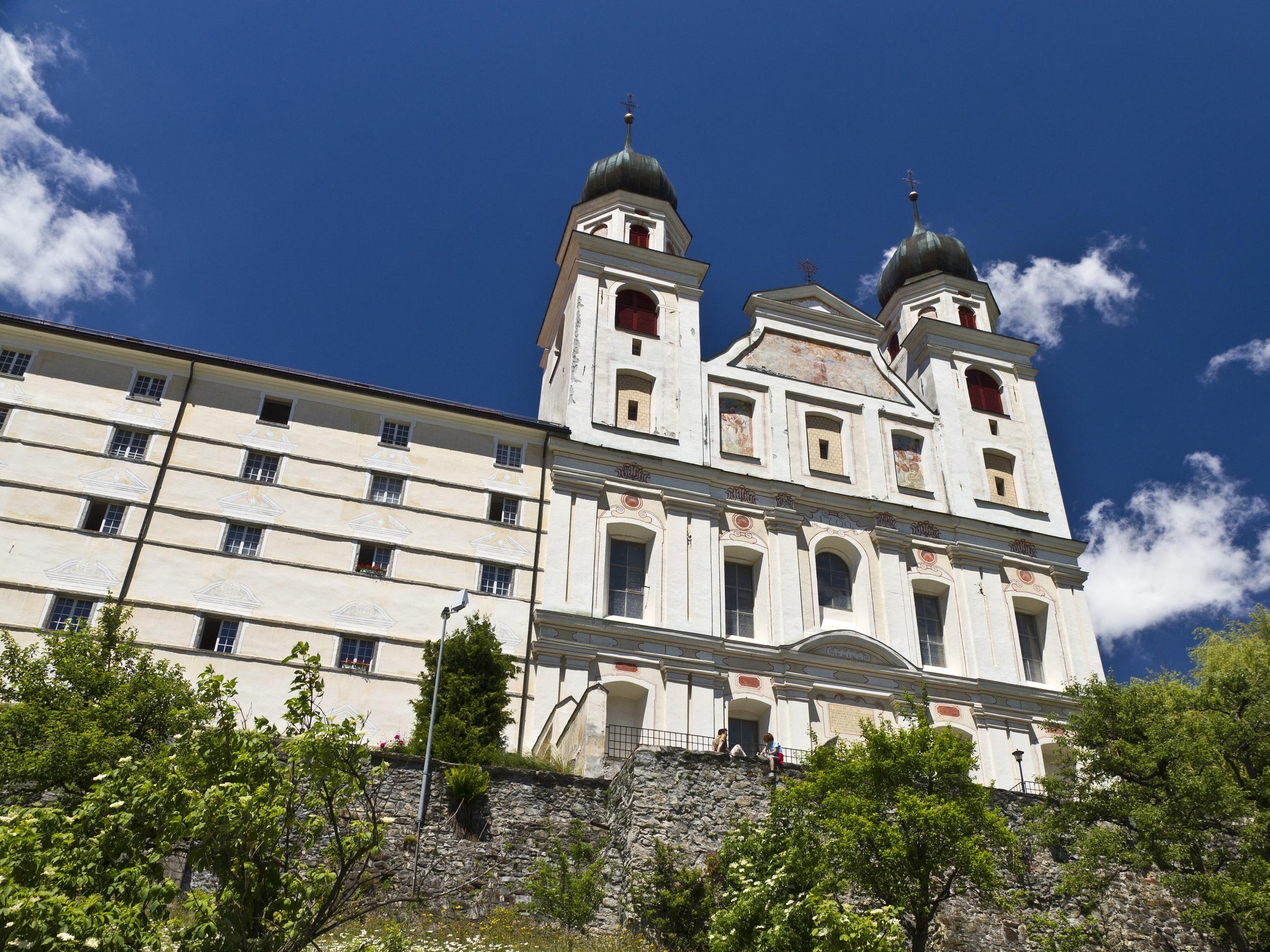
Disentis Monastery
The Disentis Monastery looks back on a history of around 1,300 years. It received its present Baroque form in the 17th century. Worth seeing is the towering monastery church of St. Martin with two onion domes. Inside, you will find stucco, gold, and masterful vaulted paintings. The monastery museum is a treasure chamber full of sacred artworks. In the former chapter hall of the Benedictine abbey, it displays statues, vestments, altar items, and objects of Christian customs. Another room provides an interesting insight into the history of the monastery. Additionally, there is a natural history exhibition.
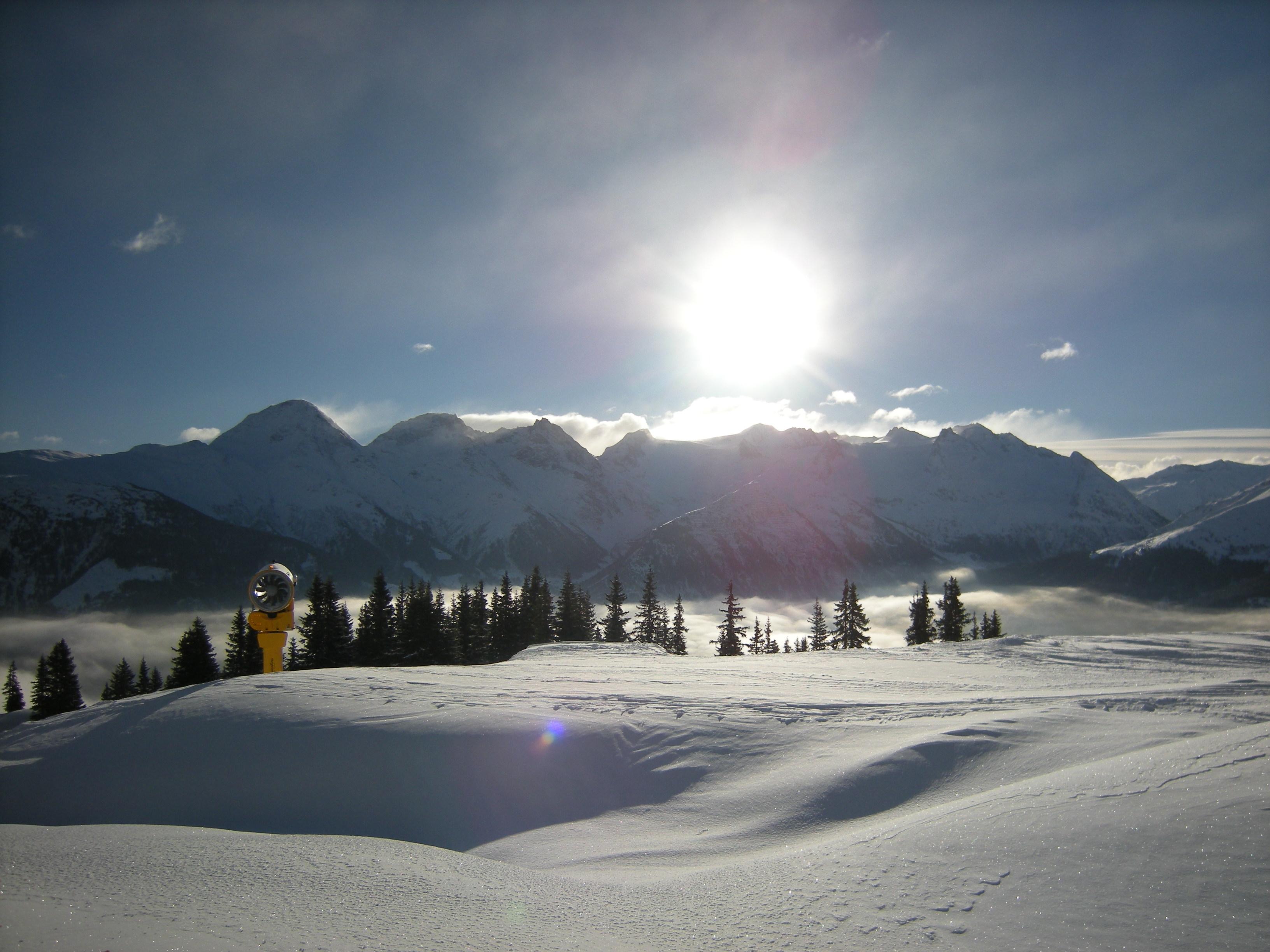
SkiArena Disentis
Disentis is one of the most beautiful ski areas in Switzerland. The Piz Alv and its couloirs are popular among freeriders: they still offer untouched runs even when the last snowfall was a few days ago. After a long day on the slopes, you can take the après-ski train on the Andermatt-Disentis route. In summer, Disentis is a paradise for hiking enthusiasts. The various themed hikes, which explore local herbs and animals, are recommended.
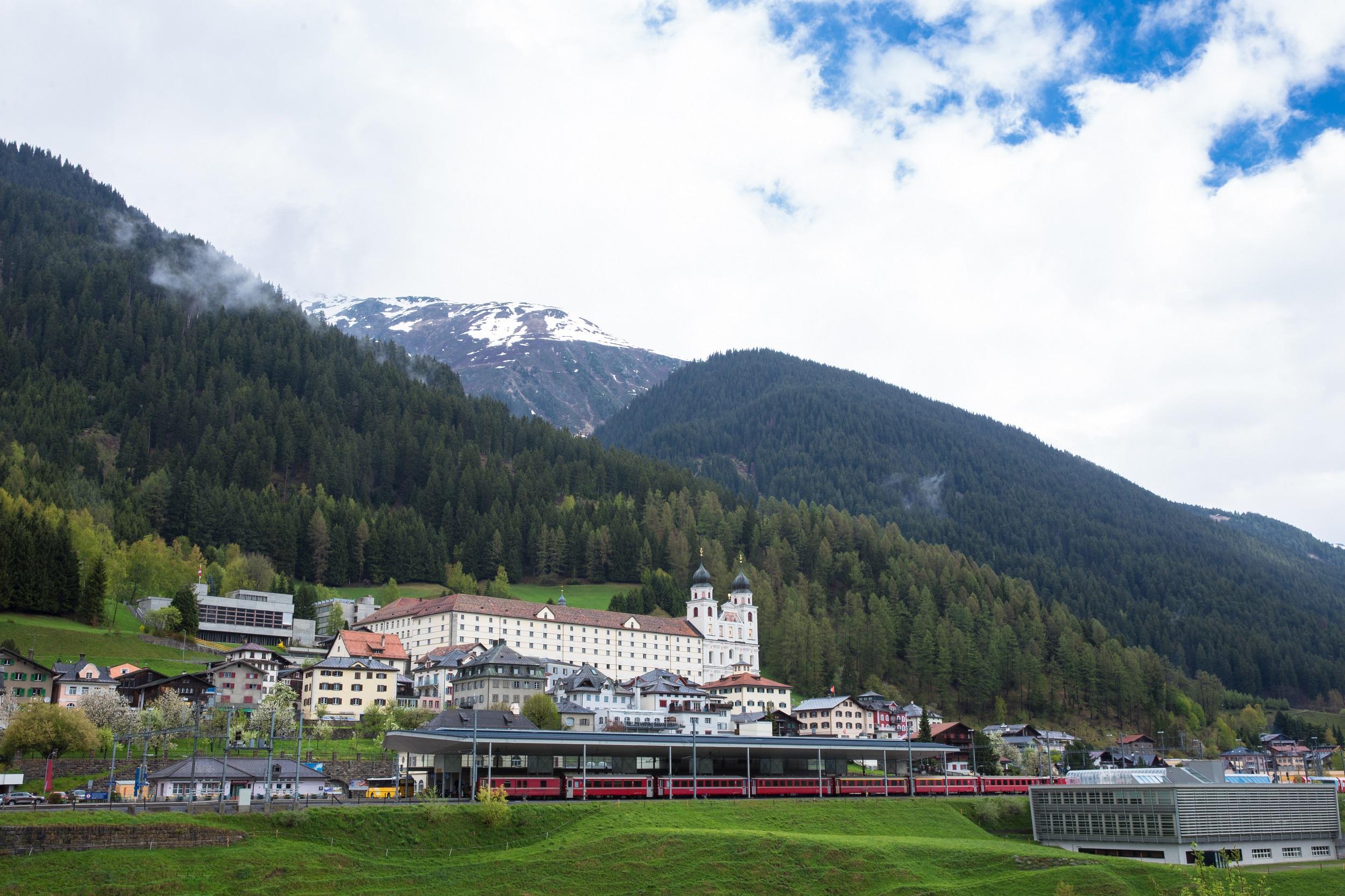
Caischavedra
In winter, Caischavedra offers sun-drenched slopes and dreamlike routes for snowshoe hikes. The view of the snow-covered peaks of Piz Medel and Piz Muraun is breathtaking. In summer, however, you should definitely explore the area around Caischavedra on foot. Numerous themed hiking trails run here, dealing with the nature and history of the Surselva. A trip to Disentis is worthwhile, with its baroque monastery and crystal museum, where particularly valuable and beautiful mountain crystals are displayed.
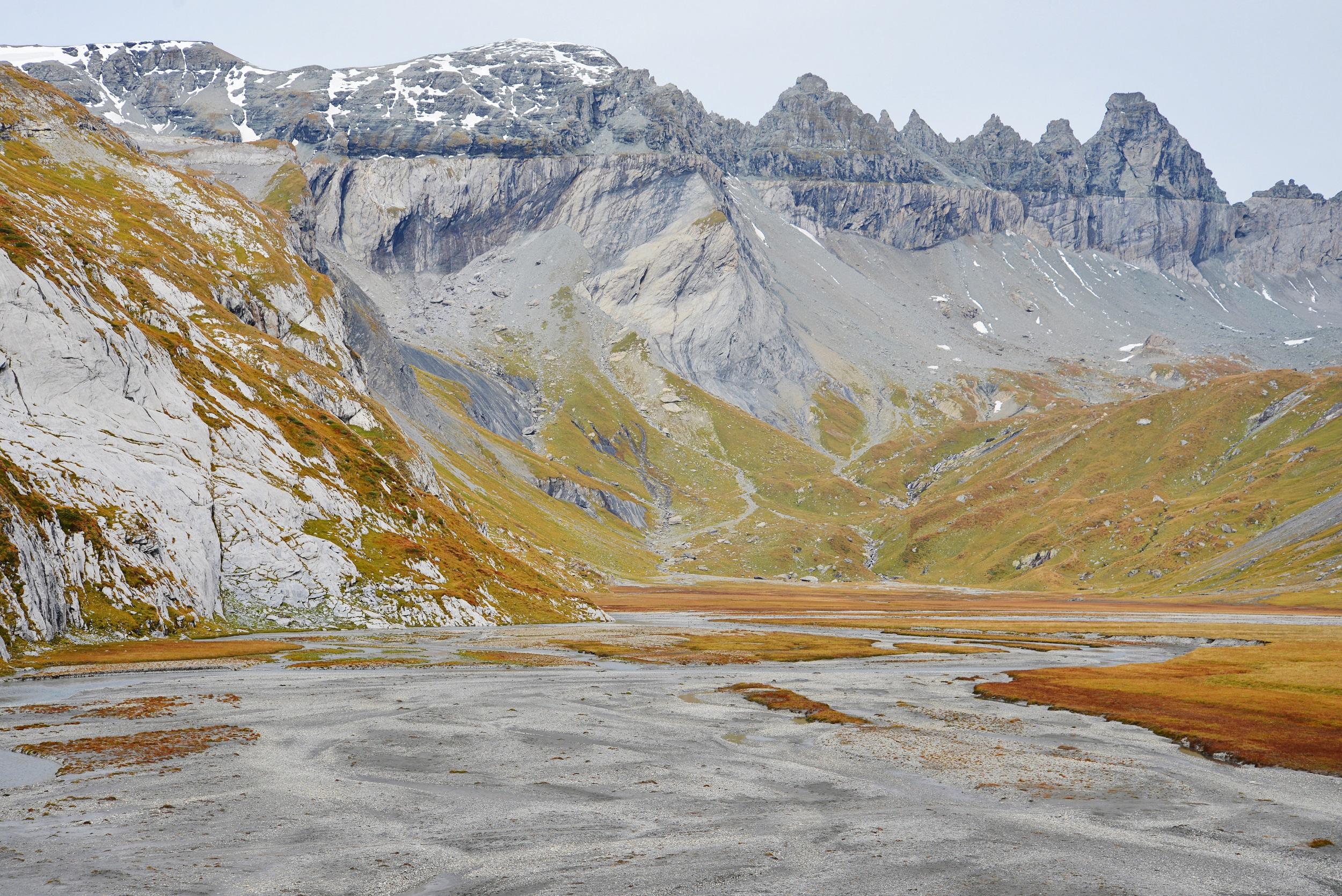
Segnesboden
The high plateau in the Swiss canton of Graubünden stretches at an altitude of about 2,200 meters and offers an impressive view of the surrounding mountains and valleys. Wide grassy areas, scree plains, and moor landscapes, as well as the clear mountain air, make everyday life fade away. One of the most famous hikes on the Segnesboden leads to the spectacular Martinsloch, a natural window in the rock walls. In addition to hiking, you can also go mountain biking and climbing at the Segnesboden or simply enjoy the nature of the majestic high plateau.
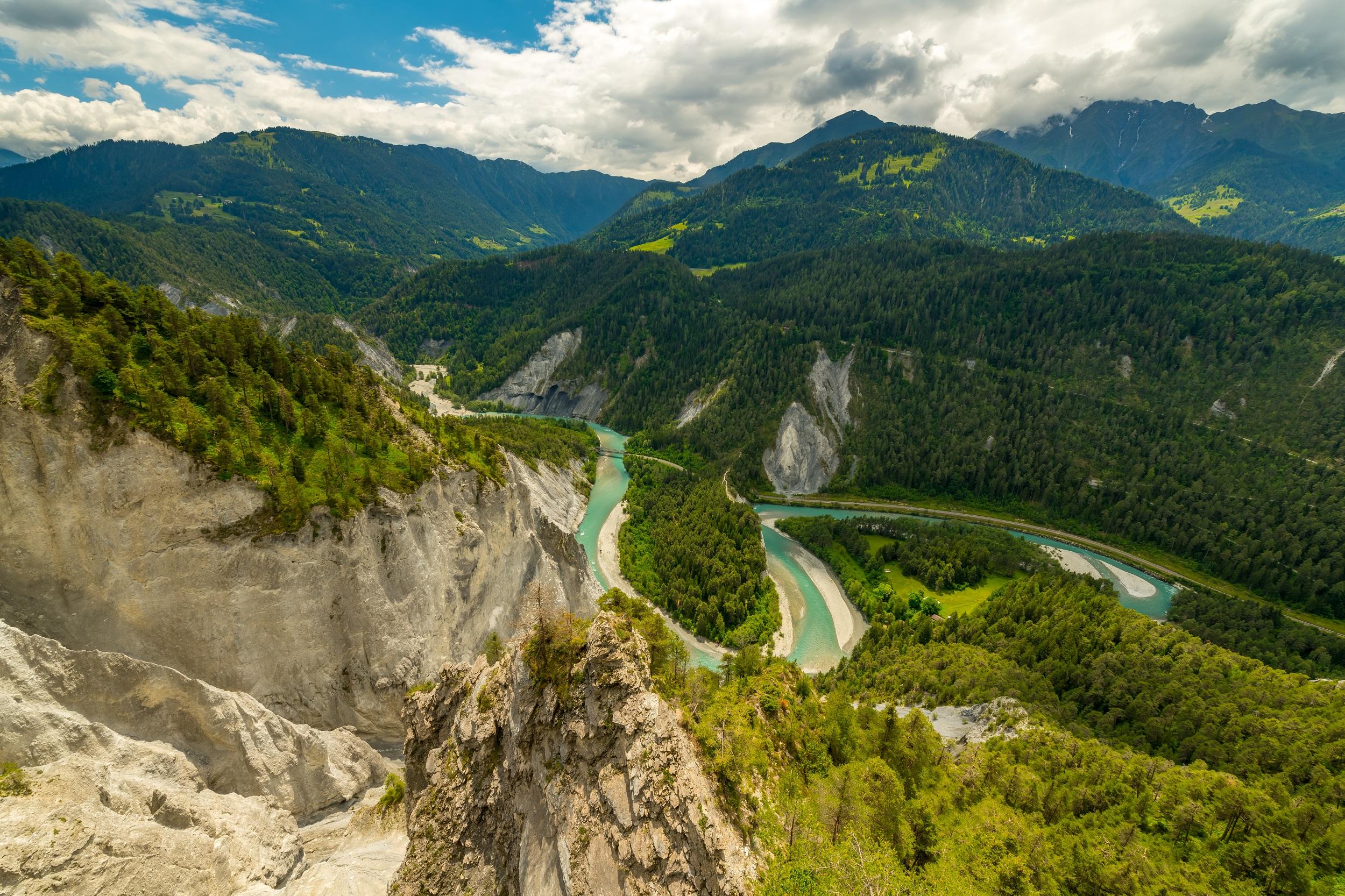
Rhine Gorge
The Rhine Gorge near Bonaduz in Graubünden is up to 400 meters deep. Steep white cliffs with dense tree cover alternate with mysterious forests and tranquil lakes, creating one of the most spectacular landscapes in the Alps. The Rhine Gorge can be explored on a well-marked network of hiking and cycling trails, for example from Versam-Safien, Trin, or Valendas-Sagogn. Along the way, rest areas invite you to pause for a snack and take in the majestic nature.
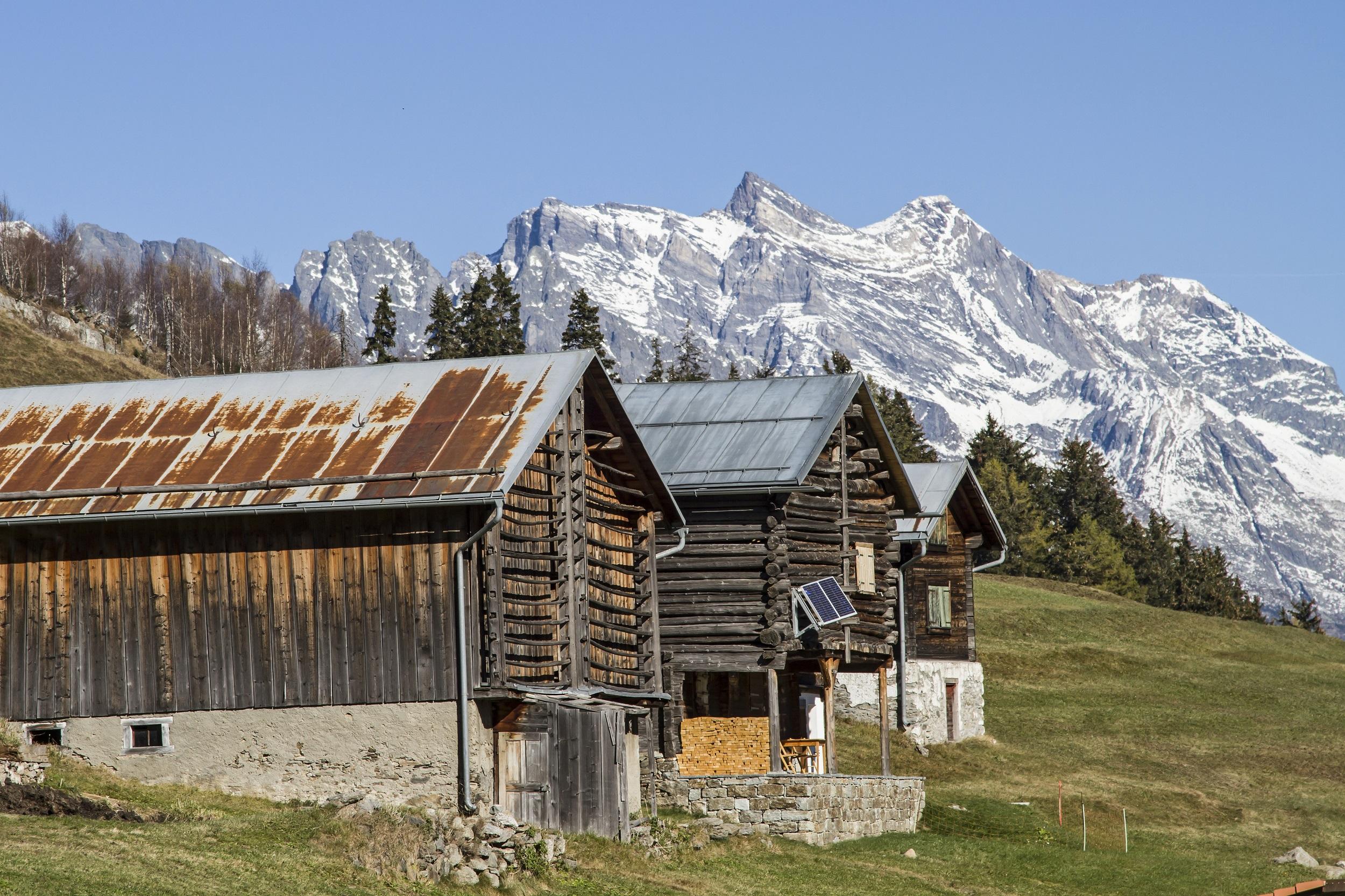
Medelser Waterfalls
Many vacationers are drawn from nearby Disentis to hikes around Piz Medel, which also lead to the Medelser Waterfall. This waterfall is formed by the water of the young Rhine and fascinates with the masses falling down the rocks. Within a day tour, you can admire these unique waterfalls. It is worth bringing enough provisions for a rest. From the Medelser Waterfalls, you enjoy a magnificent view of Piz Medel, one of the most distinctive mountains in Switzerland.
Disentis - Secret spots
Suspension Bridge Mutschnengia
The Mutschnengia suspension bridge is an impressive suspension bridge in Switzerland, distinguished by its picturesque location and remarkable construction. It offers hikers and nature enthusiasts a unique view of the surrounding mountain landscape and the valley. This bridge is not only a popular destination for outdoor activities but also a technical masterpiece that highlights the harmony of architecture and nature.
Val Bugnei Viaduct
With its nine arches, the 120 m long Val Bugnei Viaduct near Disentis spans the Bugnei Valley. It was built in the first decades of the 20th century and renovated at the turn of the millennium. The viaduct is a popular photo subject, especially when a Glacier Express crosses the bridge.
The first #Landart Park on the Rhine
The first land art park on the Rhine is a unique place where art and nature blend harmoniously. Visitors can experience a variety of impressive landscape artworks in the park that highlight the beauty of the Rhine. The park offers a breathtaking setting for art lovers and nature enthusiasts alike and invites inspiring walks along the river.
The herb garden of Disentis Monastery
The herb garden of the Disentis Monastery is a charming place that showcases a variety of medicinal herbs and flowers used in traditional medicine and cuisine. Visitors can experience the careful care and knowledge of the monks about herbalism in this garden. In addition to its beauty, the garden also offers insights into the practices of herb drying and processing, which are used for making teas and remedies.
Disentis - In 3 days
Day 1
Disentis in the wide Vorderrhein Valley is considered the cultural center of the Surselva region. The Graubünden town is dominated by the Disentis Monastery, one of the oldest still-inhabited Benedictine abbeys in Switzerland. Surrounded by wooded mountains and lush green alpine meadows, it sits gleaming white above the village at the foot of the Oberalp Pass and the Lukmanier. Take ample time to visit the vast complex with its over 1,300-year history. The medieval monastery was replaced in the 17th century by a magnificent Baroque building. In addition to the artistically equipped monastery church of St. Martin, it includes a Rhaeto-Romanic library and the noteworthy monastery museum, which, like a treasure chamber, offers valuable sacred art. Afterwards, enjoy a delicious bite in the monastic St. Placi parlor. If you are traveling with children, make a detour to the remote Salaplauna monastery farm. There, you can observe horned cattle in a free-range barn, while a visitor center tempts with the sale of sausages, cheese, and other local products.
Day 2
Not only does the monastery shape the townscape of Disentis, but also the onion dome of the parish church of St. John the Baptist. It is one of the largest Baroque churches in the canton of Graubünden and houses a late Gothic carved altar from the workshop of the renowned Memmingen sculptor Ivo Strigel. Those who are dazzled by the church's opulent furnishings can also trace the coveted precious metal elsewhere in Disentis. After a kilo-heavy nugget was found near the village in 2000, gold panning courses for the whole family are regularly offered on the Rhine. Equipped with rubber boots, a shovel, and a gold pan, you will find not only gold but also sparkling crystals under expert guidance. Almost like gold, the caramel in the Bündner nut cake shines, which you can enjoy in one of Disentis's cozy cafes after your river adventure. Afterwards, you are energized to play a round of mini-golf at Center Fontauna or solve exciting puzzles in the Escape Room Missiun Disentis.
Day 3
Around Disentis, climbers, mountain bikers, and hikers are greeted by an impressive mountain world. One of the region's greatest natural attractions is the source of the Rhine, located below the 2,928-meter-high Badus in the mystical Lake Toma. A tour there is only possible during the snow-free period between mid-June and October. The shortest route starts at the Oberalp Pass, which you can easily reach by train. From there, an 8-kilometer-long mountain hiking trail marked in red and white leads over blooming alpine meadows and rocky paths to the source of the Rhine. Continue hiking to the Badus Hut, 20 minutes away on foot, which is worth a visit for its hearty cuisine and breathtaking views. Alternatively, from Sedrun, the family-friendly NEAT adventure trail offers a playful introduction to the New Railway Alpine Transversal at twelve information stations, and you can even walk over the Gotthard Base Tunnel. In winter, spend your third day in Disentis on the trail along the Rhine or on one of the varied slopes with après-ski afterward.